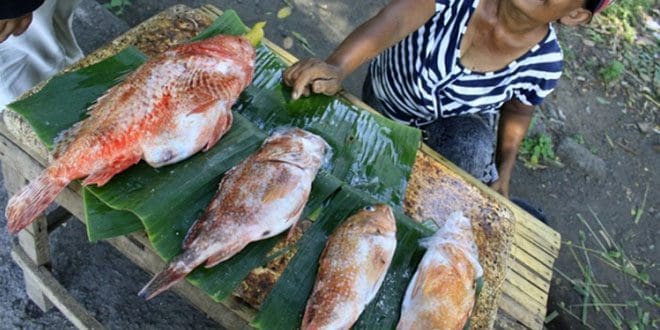We are all aware these days that eating fish provides our body with omega 3 fats that promote a healthy brain and immune system. Indeed omega 3 fatty acids are essential to human health as our bodies cannot manufacture them and we must obtain them in the diet. Human breast milk is the highest source of the omega 3 fat called DHA but let’s face it breast milk is hard to come by after a certain age!
Some people worry about mercury contamination in fish and this is a real threat in this day and age. The oceans have become contaminated with heavy metals and plastics because of lack of recycling programs in most countries. Indeed there are piles of garbage and plastic floating in great heaps around the oceans. The Fukoshima nuclear accident in Japan caused radiation contamination in the North Pacific Ocean. This is the reason I only eat fish produced in Scotland or Australia.
Australian and New Zealand fish are excellent and the southern coasts of Australia have pristine waters that provide clean and delicious seafood. I only wish that Australia would develop a sustainable fishing industry as we are perfectly positioned to do that and yet we let the opportunity pass us by.
The Australian government lacks vision and action on this issue – why can’t they see that such as industry would improve our economic and physical health?
Personally I do not want to eat fish that is mass produced in Asian waters where the standards are not as regulated and environmental pollutants are so much higher. Does anyone know what they feed the fish they are raising? I always check the packaging to see where the fish comes from. Yes I admit I probably do suffer with a mild degree of OCD but I can live with that.
Pregnant women should not eat too much fish as they may develop undesirably high levels of blood mercury. I have seen elevated blood mercury levels in several of my patients who eat seafood 5 or more times a week.
Fish Poisoning
The tragic death of two Australian women in Bali in January 2014 appears to have been caused by a type of toxic reaction to eating contaminated fish. This form of fish poisoning is known as scombroid poisoning and it is not talked about that much because it is rarely fatal; indeed its effects are usually so mild that it does not get reported by doctors. The cause of scombroid fish poisoning is the bacteria in the fish and the fish itself is not poisonous. scombroid fish poisoning typically happens in fish with darker meat such as tuna and mahi mahi. It is more likely if the fish is not stored at cold enough temperatures. Some types of bacteria when they get into the fish produce large amounts of the allergy chemical called histamine in the flesh of the fish. In allergy prone people this high load of histamine can cause a violent allergic reaction (even anaphylaxis) soon after the fish is eaten. This is why all people who suffer with severe allergies should carry an adrenalin injection on their person. There are only several minutes between life and death. The autopsy results on the two Australian women who died after eating the Bali fish showed that they most likely died from scombroid fish poisoning. This is also made likely by the fact that both were asthmatics.
Another type of seafood contamination is called ciguatera which comes from algae that the fish eats off tropical reefs. If large amounts are ingested, especially recurrently, long term damage to the nervous system can occur from this algae toxin.
To get more of your omega 3 fats from non fish sources you can eat –
Vegetarian sources:
- Seeds – hemp seeds, mustard seeds, flaxseeds and chia seeds
- Seaweed or spirulina
- Certain vegetables such as spinach and cruciferous vegetables
- Mangoes
- Supplements containing microscopic algae that make DHA
Animal sourced:
- Organic eggs laid by chickens fed vegetable scraps
- Grass fed lamb
Last year, Whole Foods was pressured to pull from its shelves DHA derived from krill — tiny relatives of shrimp living in the Antarctic, the largest animal biomass on the planet and a potent source of DHA. The company cited sustainability concerns over the harvesting of krill.
Ironically, krill was supposed to solve the threat of overfishing resulting from the demand for DHA. But the decline of animal populations that rely on krill raised concerns over management of this natural resource, prompting the Commission for the Conservation of Antarctic Living Marine Resources to issue a report changing quotas and restricting fishing areas.
Then we had an epiphany – go to the source – the microscopic algae that make DHA itself. This way we can cut out the middleman — or middle fish and middle krill, as it were. Raised-on-the-farm algae yield DHA that is sustainable. .
But is algae DHA as effective at conveying the heart-healthy properties as the DHA we derive from fish oil? Many studies suggest the answer is yes, but a comprehensive review of the literature was needed.


Leave A Comment